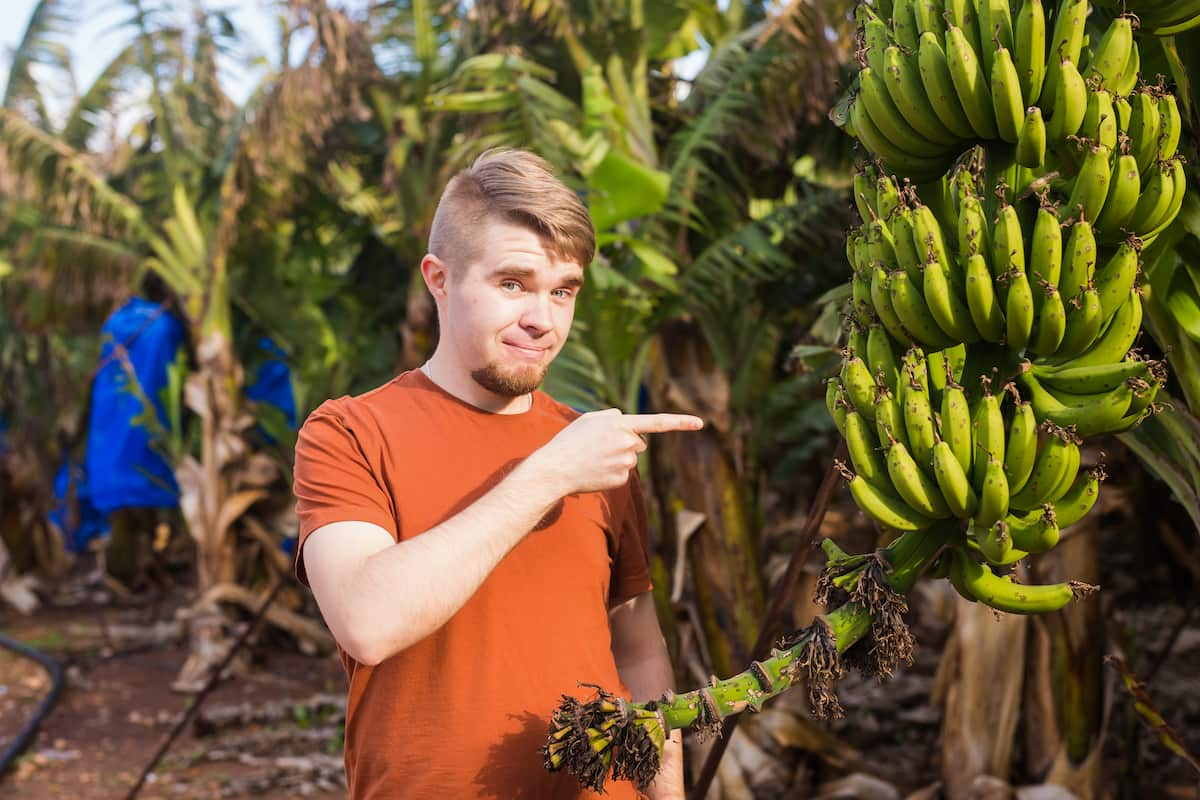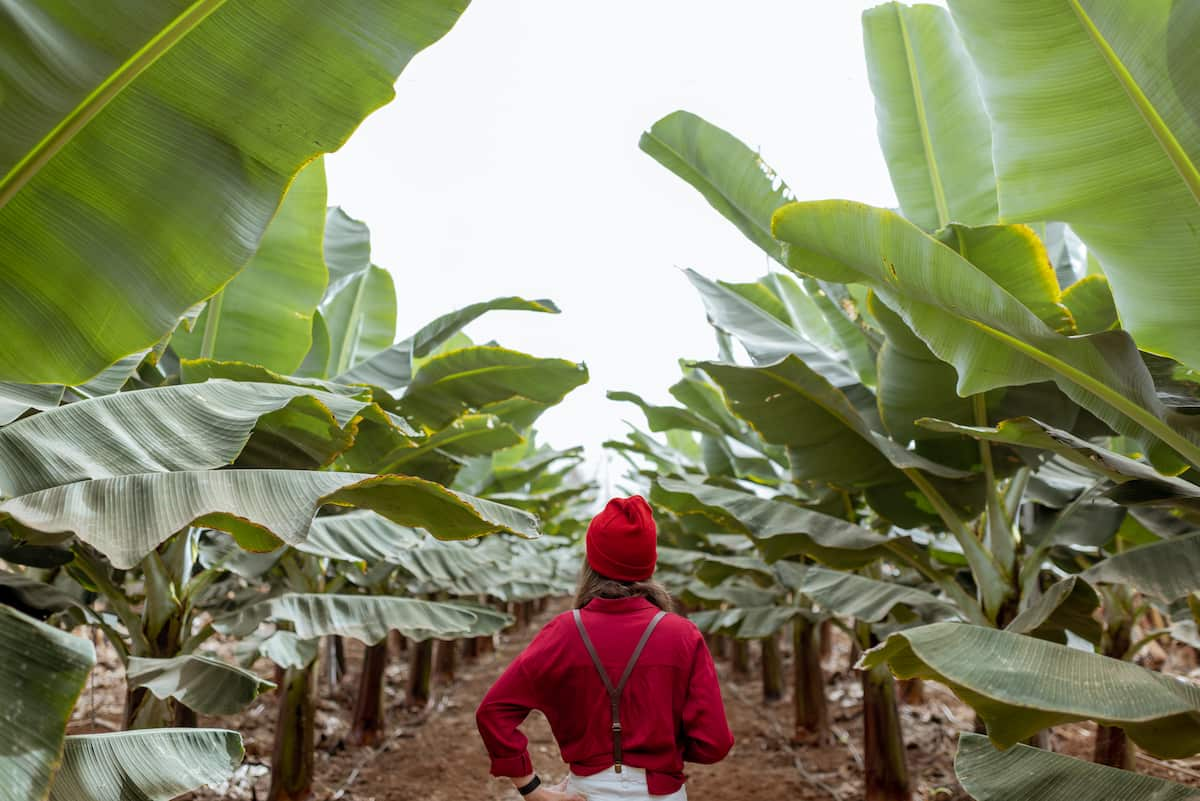The Banana Fruit Rust Thrips, Chaetanaphothrips signipennis, belonging to the Family Thripidae of the Order Thysanoptera, is a serious pest of banana crops, causing significant yield losses and reducing the quality of the fruit. The Banana Rust Thrips is native to Southeast Asia. The Banana Rust Thrips feed on the leaves and fruit of banana plants, causing damage to the tissue and reducing the plant’s ability to photosynthesize effectively.

The Banana Rust Thrips can transmit the banana streak and bunchy top viruses. Controlling the Banana Rust Thrips is challenging due to their small size and ability to reproduce quickly. Effective management strategies are essential to minimize the impact of this pest on banana production.
To effectively manage this pest, it is important to understand its life cycle, its preferred habitats, and the best methods for controlling it. This article will provide an overview and discussion of the Banana Rust Thrips Pest in Banana crops, including its symptoms, identification techniques, and control.
Banana Rust Thrips Pest Management
Life Cycle of Banana Rust Thrips Pest in Banana Crop
The female Banana Rust Thrips lays eggs in the crevices of the banana plant, and the eggs hatch within 2-3 days. The newly hatched larvae are tiny and translucent, have two larval instars, and pass through various feeding stages before entering the pupal stage. During the larval stage, the thrips feed on the young tissues of the banana plant, causing significant damage. After completing the second instar, the thrips enter the prepupa stage.
The prepupa is an inactive stage where the thrips do not feed and undergo significant morphological changes. After a few days, the thrips enter the pupal stage, becoming more active and developing adult characteristics. The pupal stage lasts for around three to four days. They are highly mobile and capable of flying, allowing them to disperse to new areas quickly. Adult females can lay up to 60 eggs during their lifespan, up to 30 days, under optimal conditions. The lifecycle of the thrips takes approximately 18-21 days under optimal conditions.
Occurrence of Banana Rust Thrips Pest in Banana Crop
- Location of Banana Rust Thrips pest: This pest infests Banana crops in India, Africa, Sri Lanka, China, Thailand, Vietnam, Indonesia, the United States, Mexico, Brazil, Colombia, Ecuador, the Philippines, and Australia.
- Host range: The Banana Rust Thrips pest infects crops like Bananas, Mango, Papaya, Pineapple, Citrus, Plantain, Guava, and Tomato.
Factors Favoring the Population Increase of Banana Rust Thrips Pest in Banana Crop
- The Banana Rust Thrips thrives in warm and humid conditions. High temperatures and moisture levels create favorable conditions for the thrips to reproduce and spread rapidly.
- The pest can hitchhike on plant material, such as banana seedlings, and infect new areas where banana crops are grown.
- The Banana Rust Thrips is capable of reproducing continuously throughout the year, and its population can increase rapidly under favorable conditions.
- The absence of natural enemies such as predators and parasites can also contribute to Banana Rust Thrips infestation in banana crops.
- The pest reaches its peak population level during dry periods or in low rainfall areas.
Identification of Banana Rust Thrips Pest in Banana Crop
- Egg: The eggs are translucent and oval-shaped, measuring around 0.2 mm.
- Larva: The larva is white, apterous, and resembles adult lice.
- Pupa: The pupa is white and 1mm long.
- Adult: The adult Banana Rust Thrips is a small, slender insect that measures around 1.5 mm in length. The adults are light brown with yellow legs, shaded wings, and rasping & sucking mouthparts.
Damage Symptoms of Banana Rust Thrips Pest in Banana Crop
- The thrips suck the sap of pseudostem, leaves, and fruits, which leads to chlorosis in leaves, and corky scab lesions will be formed on the fruits.
- The lacerations caused by the pest can be seen on leaves and fruits.
- V-shaped markings are present on leaf petioles.
- A rusty, reddish discoloration occurs on the skin of the fingers.
- The characteristic symptom is that the affected fruits crack and give a rusty, water-soaked appearance.
- The damage caused by the thrips can result in stunted growth, reduced yield, and lower fruit quality.
In case you missed it: Banana Rhizome Weevil Pest Management: Symptoms, Treatment, Chemical, Biological, Natural, and Organic Control

Percentage of Yield Loss in Bananas Due to Banana Rust Thrips Pest
- In India, the yield losses due to Banana Rust Thrips pests are 50%. In Thailand, the percentage of yield loss is 10-50%. In Thailand, it is 50%. In Vietnam, the losses are 40%. In Sri Lanka, the losses are 50%. In Indonesia, the losses are 30%. In Africa, it is 30-50%. In the United States, it is 5-10%. In Mexico, it is 30%. In Brazil, it is 50%. In China, it is 60%.
- In Colombia, the losses are 40%. In Ecuador, it is 30%. In Australia, it is 5-10%. In the Philippines, the yield losses are 50%. The Economic Threshold Level (ETL) for the Banana Rust Thrips pest is set at 1-2 thrips per plant.
Cultural Control of Banana Rust Thrips Pest in Banana Crop
- The rotation of banana crops with other crops such as legumes, maize, or sorghum can help to break the pest’s life cycle.
- Proper soil management practices such as regular plowing, mulching, and proper drainage can help to reduce the pests’ population in the soil.
- Pruning helps to remove infested and damaged plant parts and enhances air circulation and light penetration, making the environment less favorable for the pest.
- Planting an attractive crop such as marigold around the banana crop can help to lure it away from the main crop and reduce its population.
- Removal of plant debris, weeds, and other debris from the field prevents the pest from having a place to hide and breed.
Biological Control of Banana Rust Thrips Pest in Banana Crop
- Predators, such as the minute pirate bug, lacewings, ladybird beetles, and the six-spotted thrips, help to control the pest’s population.
- Parasitoids such as the braconid wasp and the eulophid wasp lay their eggs in the host, and their larvae feed on the host’s tissues.
- Microbial pathogens such as the entomopathogenic fungus Beauveria bassiana and the entomopathogenic nematode Steinernema carpocapsae will infect and kill the pests.
Chemical Control of Banana Rust Thrips Pest in Banana Crop
- Spray insecticides on the crops like Chlorpyrifos, Malathion, Imidacloprid, Thiamethoxam, and Deltamethrin on the foliage to control the pest.
- Spray insect growth regulators like Diflubenzuron and Methoxyfenozide cause abnormal molting, reduced fertility, and eventually, death of the pest.
- Soil Application – Apply Fipronil and Bifenthrin to control the pest populations.
Organic Control of Banana Rust Thrips Pest in Banana Crop
- Biopesticides such as Bacillus thuringiensis soil bacterium will help to control the pest by intoxicating it.
- Spinosad produced by the soil bacterium Saccharopolyspora spinosa should be sprayed on the leaves and stems of banana plants to control the pest.
- Plant extracts from neem, garlic, cinnamon, ginger, turmeric, and chili can be applied to manage the infestation.
- Tea tree oil can help to improve the plant’s resistance to pests and diseases, while citrus oil helps to repel pests and improve plant health.
- Soap sprays are natural insecticides that can control Rust Thrips by dehydrating them.
Preventive Measures for Control of Banana Rust Thrips Pest in Banana Crop
- Planting healthy and resistant suckers can prevent pest incidence.
- Provide Hot water treatment before planting the crop.
- Provide bunchy cover protection in the early stages of planting.
- Monitor the crops regularly to identify pest infestation in the early stages to keep it under control.
In case you missed it: Banana Pseudostem Borer Pest Management: Symptoms, Treatment, Chemical, Biological, Natural, and Organic Control

Conclusion
The Banana Rust Thrips Pest, Chaetanaphothrips signipennis, is a serious pest that affects banana crops worldwide, causing significant yield losses. Implementing effective control strategies to prevent or minimize the damage caused by this pest is important. Effective management of Banana Rust Thrips requires a holistic approach that combines various control strategies under an IPM framework to ensure sustainable and environmentally friendly banana production.
- Deworming Schedule for Dogs/Puppies: A Beginners Guide
- How to Prevent and Control Parasites in Goats
- Beneficial Insects in Pest Management
- Natural Solutions for Pest Control in Flower Gardens
- Types of Fungicides Used in Agriculture
- Common Issues in the Fruit Development Stage of Pomegranate Farming
- Fruit Development Issues in Papaya: Easy Solutions and Treatment
- Soil-Borne Diseases and How to Protect Your Plants
- Practices to Prevent Disease Spread in the Garden